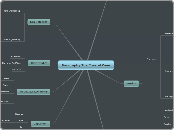Geography The Coastal Zone
Tombolo
Bar
Spits
Salt Marshes
Beaches
All Coastal Key Terms
Deposition
When the sea loses energy, it drops the sand, rock particles and pebbles it has been carrying. This Process happens when the swash is stronger than the backwash and is associated with constructive waves
Backwash
The water drains back down the beach
Swash
The water rushing up the beach
Fetch
The distance the wind blows over
Case Studies
Old Harry And Wife
Mappleton
Sea Defences
Soft Engineering
Bastions
Gabions
Beach Building
Hard Engineering
Revetement
Groynes
Offshore breakwater
Sea Wall
Rip Rap
Movement Of Material Along Coasts
Saltation
Load is bounced along the sea bed, eg small pieces of shingle or large sand grains. Currents cannot keep the larger and heavier sediment afloat for long periods.
Traction
Pebbles and larger sediment are rolled along the sea bed.
Solution
Minerals are dissolved in sea water and carried in solution. The load is not visible. Load can come from cliffs made from chalk or limestone, and calcium carbonate is carried along in solution.
Suspension
Small particles are carried in water, eg silts and clays, which can make the water look cloudy. Currents pick up large amounts of sediment in suspension during a storm, when strong winds generate high energy waves.
Lonshore Drift
The direction of prevailling wind causes the swash of the waves to carry material up the beach at an angle. The backwash then flows back to the sea in a straight line at 90°.
Continual swash and backwash transports material sideways along the coast.
Erosion
Features
Cliffs
Stump
Stack
Arch
Cave
Cracks
Wave-Cut Platforms
Wave-Cut Notches
Bays
Headlands
Processes
Geology
Imperable
Permable
Subtopic
Sub-aerial Processes
Biological Weathering
Human Activity
Weathering
Freeze-thaw
Chemical Weathering
Marine Processes
Abrasion/Saltation
Bits of rock and sand in waves grind down cliff surfaces like sandpaper.
Corrosion/Solution
Acids contained in sea water will dissolve some types of rock such as chalk or limestone.
Attrition
Waves smash rocks and pebbles on the shore into each other, and they break and become smoother.
Hydraulic Action
Air may become trapped in joints and cracks on a cliff face. When a wave breaks, the trapped air is compressed which weakens the cliff and causes erosion.
Types Of Waves
Destructive
Strong Backwash
15 Waves A Minute
High Waves
Weak Swash
Good For Surfing
Wave Crests Close
Steep Beaches
Constructive
6-8 Every Minute
Low WAves
Strong Swash
Weak Backwash
Bad For Surfing
Wave Crests Far Apart
Gentle Beach

